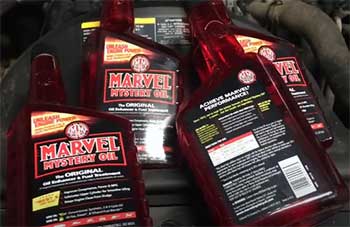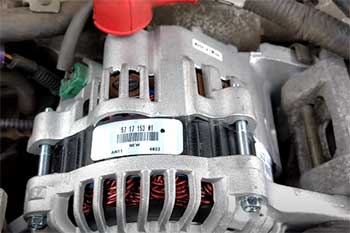I’ve always been a bit of a gearhead when it comes to car tech, and lately, I’ve been on a mission to find the perfect dash cam. That’s how I stumbled across the Redtiger F7N and F7NP—two models that promise to keep my drives safe and documented in crisp detail.
My intent here is simple: I’m going to break down these two dash cams, comparing their features, weighing their pros and cons, and helping you decide which one might suit your needs best.
By the end, you’ll have a clear picture of what each offers, straight from my hands-on perspective.
Let’s get rolling!
A Brief Comparison Table
| Feature | Redtiger F7N | Redtiger F7NP |
| Front Camera Resolution | 4K (interpolated, 1440p native) | 4K (interpolated, 1440p native) |
| Rear Camera Resolution | 1080p | 1080p |
| Rear Camera Type | Waterproof, external | Non-waterproof, adjustable |
| Mount Type | Adhesive GPS mount | Suction-cup GPS mount |
| Included SD Card | None | 32GB |
| Screen Size | 3.16 inches | 3.16 inches |
| Wide Angle (Front/Rear) | 170° / 140° | 170° / 140° |
| Wi-Fi | Yes (2.4GHz) | Yes (2.4GHz) |
| GPS | Built-in | Built-in |
| Night Vision | HDR/WDR, F1.5 aperture | HDR/WDR, F1.5 aperture |
| Parking Mode | Yes (requires hardwire kit) | Yes (requires hardwire kit) |
| Weight | 1.34 lbs | 1.43 lbs |
| Price (approx.) | $149.99 USD | $185.99 USD |
My Journey With Redtiger Dash Cams
When I first decided to upgrade my car with a dash cam, I wanted something reliable, easy to use, and packed with features that wouldn’t break the bank. Redtiger caught my eye because their F7N and F7NP models kept popping up in reviews and forums.
Both are dual-channel dash cams—meaning they record the front and rear of your vehicle—and they boast some impressive specs like 4K resolution and built-in GPS. But as I dug into the details, I realized these two weren’t as similar as they seemed at first glance.
Let me walk you through what I found.
Unboxing The Redtiger F7N
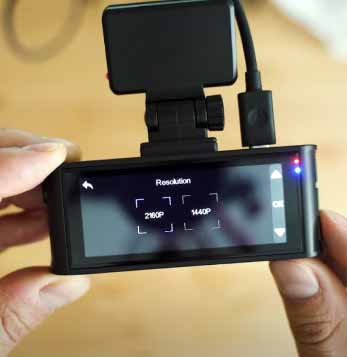
The F7N arrived in a sleek little box, and I was excited to see what it had in store.
Inside, I found the front camera unit, a waterproof rear camera, an adhesive GPS mount, a car charger, and some basic cables.
No SD card, though, which was a bit of a letdown—I had to grab one separately.
The build felt solid, and at 1.34 pounds, it’s not too heavy to stick on my windshield.
The 3.16-inch screen was a nice touch, big enough to see what’s going on without feeling like I’m staring at a tablet.
Setting it up was straightforward.
I stuck the adhesive mount to my windshield, connected the rear camera (which I mounted outside near my license plate), and powered it up.
The 170-degree front lens and 140-degree rear lens promised wide coverage, and I was eager to test that out on the road.
Unboxing The Redtiger F7NP
A few weeks later, I got my hands on the F7NP. This time, the box included the front camera, a non-waterproof rear camera, a suction-cup GPS mount, a car charger, and—hallelujah—a 32GB SD card.
At 1.43 pounds, it’s slightly heftier than the F7N, but not enough to notice once it’s mounted. The screen size matched the F7N at 3.16 inches, and the overall design felt familiar yet distinct, thanks to that suction-cup mount.
Installation was a breeze again. I slapped the suction mount on my windshield, adjusted the rear camera (which I placed inside on the back window), and fired it up.
The same wide-angle lenses were in play, and I couldn’t wait to compare the footage side by side.
Key Differences Between Redtiger 7FN And F7NP Dash Cam
- Video Quality: What I Saw on the Road?
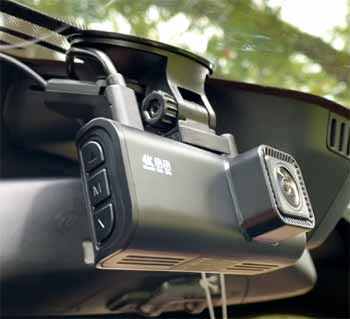
Both the F7N and F7NP advertise 4K front recording and 1080p rear recording, which sounds amazing on paper.
But here’s where I hit a snag: neither is a true 4K dash cam.
After some research and testing, I learned they use a Sony IMX335 sensor with a native resolution of 1440p, upscaled to 4K through interpolation.
That means the “4K” label is more marketing than reality, but the footage still looked sharp during the day—license plates and road signs were clear enough to read.
The F7N’s front camera impressed me with its clarity in bright sunlight, though at night, it was just average.
The rear camera, at 1080p, was decent in daylight but struggled in low light, often looking grainy.
The F7NP mirrored this performance—same sensor, same results. Daytime footage was crisp, nighttime was passable but not stellar. The HDR and WDR tech, paired with an F1.5 aperture, helped balance light and dark areas, but don’t expect miracles in pitch-black conditions.
- Rear Camera Differences: A Game Changer?
One of the biggest differences I noticed was the rear cameras. The F7N’s is waterproof and designed for external mounting, which is fantastic if you drive a truck or a car without a rear window. I mounted mine outside, and it held up fine through rain and dust.
But adjusting the angle? Forget it—it’s fixed, so you better nail the placement on the first try.
The F7NP’s rear camera, on the other hand, is non-waterproof and meant for indoor use, typically on your rear window. What I loved here was the adjustability—I could tweak the angle to get the perfect view.
It’s not weatherproof, so it’s a no-go for external mounting, but for my sedan, it worked like a charm. This flexibility gave the F7NP a slight edge in my book, unless you need that rugged outdoor option.
- Mounting: Stick It or Suck It?
Mounting these dash cams revealed another key difference. The F7N uses an adhesive GPS mount, which I found super secure once I stuck it on. It didn’t budge, even on bumpy roads, but it’s a one-and-done deal—repositioning means peeling it off and starting over.
The built-in GPS tracked my speed and location flawlessly, which I could check via the Redtiger app.
The F7NP’s suction-cup GPS mount was a different story. It’s easy to install and reposition, which I appreciated when I wanted to tweak its spot. However, it felt less stable—on hot days, it loosened up a bit, and I had to reattach it once.
The GPS worked just as well as the F7N’s, though, so no complaints there. If you like flexibility, the F7NP wins; if you want rock-solid reliability, the F7N takes it.
- Storage and Setup: SD Card Drama
The F7N not including an SD card was a minor annoyance. I had to buy a high-endurance one separately (a 64GB card set me back about $20), and once I did, the loop recording kicked in seamlessly—overwriting old footage when full,“lockable” clips saved via the G-sensor if I hit a bump.
The F7NP, with its included 32GB card, was ready to roll out of the box. It handled loop recording and G-sensor locking just as well, though I swapped the card for a bigger one later for peace of mind. For convenience, the F7NP gets a nod here.
- Connectivity: Wi-Fi and Apps
Both dash cams come with 2.4GHz Wi-Fi, letting me connect to the Redtiger app on my phone. I could preview footage, tweak settings, and download clips without fussing with cables. The app’s not the slickest—sometimes it lagged or dropped the connection—but it got the job done.
The F7N and F7NP were neck-and-neck here; no real difference in performance. The GPS data, synced through the app, was a bonus, showing my route and speed on a map—handy for proving where I was if needed.
- Parking Mode: Keeping Watch
I tested the 24-hour parking mode on both, which requires a separate hardwire kit (not included). Once hooked up, the G-sensor kicked in if something bumped my car, recording a 15-second clip, and the time-lapse mode kept an eye on things long-term.
The F7N’s external rear camera gave me confidence in open lots, while the F7NP’s indoor setup suited my garage parking. Both worked reliably, though the F7N’s waterproofing felt more versatile for all-weather protection.
Pros And Cons of Redtiger 7FN And F7NP Dash Cam
Redtiger F7N Pros
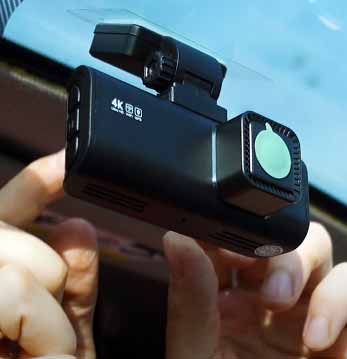
- Waterproof rear camera—perfect for trucks or harsh weather.
- Adhesive mount stays put, no wobbling.
- Lightweight at 1.34 pounds, less strain on the windshield.
- Cheaper at $149.99, easier on the wallet.
- Solid daytime footage with wide angles.
Redtiger F7N Cons
- No SD card included—extra cost upfront.
- Fixed rear camera angle—tough to adjust post-install.
- Night vision is average, not top-tier.
- Adhesive mount isn’t repositionable without effort.
- Interpolated 4K, not native—feels misleading.
Redtiger F7NP Pros
- Adjustable rear camera—easy to fine-tune the view.
- Suction mount offers flexibility for placement.
- Comes with a 32GB SD card—no immediate extra buy.
- Same sharp daytime footage as F7N.
- Slightly premium feel with included extras.
Redtiger F7NP Cons
- Non-waterproof rear camera—indoor only.
- Suction mount can loosen in heat or over time.
- Pricier at $185.99—steeper investment.
- Night vision matches F7N’s middling performance.
- A tad heavier at 1.43 pounds.
My Real-World Experience With Redtiger 7FN And F7NP Dash Cam
I took both dash cams on a week-long road trip to really put them through their paces. The F7N held strong on a rainy highway stretch—the external rear camera didn’t flinch, and the adhesive mount kept everything steady.
But when I missed a turn and needed to adjust the rear view, I was stuck with its fixed angle. The footage was clear enough to catch a near-miss with a tailgater, though the night clips were a bit murky.
The F7NP shone when I parked in a busy city lot. I repositioned the suction mount twice to dodge a glare, and the adjustable rear camera let me frame the shot perfectly.
It caught a ding from a careless parker next to me, and the G-sensor locked the clip. The suction mount wobbled a bit on a hot day, but it held up. Night footage was similar to the F7N—usable, not exceptional.
Which One Wins for Me?
Picking a favorite depends on what I need. The F7N’s rugged rear camera and lower price make it tempting for someone like me who drives in all conditions and wants to save a few bucks.
But the F7NP’s adjustability and included SD card feel more user-friendly, especially if I’m tweaking setups often. Honestly, neither blows me away with night vision or true 4K, but they’re solid for the price.
If I had to choose, I’d lean F7NP for its flexibility—though I’d swap that suction mount for something sturdier.
Analytical Take: What Stands Out?
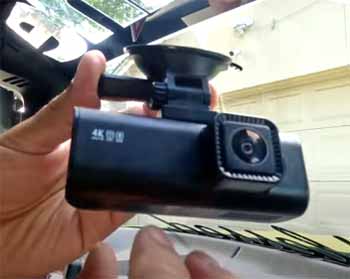
Let’s put the Redtiger F7N and F7NP under a magnifying glass and see how they stack up analytically.
These two dash cams share a lot of DNA—same sensor, same interpolated 4K, same app experience—but their differences shine through when you break them down.
I’ve crunched the numbers and compared their specs, performance, and practical use to give you a clear snapshot.
Expect some tables and figures to keep things sharp and digestible as I weigh what makes each one tick.
Core Specs Comparison
First, let’s look at the foundational specs side by side:
| Spec | Redtiger F7N | Redtiger F7NP |
| Sensor | Sony IMX335 (1440p) | Sony IMX335 (1440p) |
| Front Resolution | 4K (interpolated) | 4K (interpolated) |
| Rear Resolution | 1080p | 1080p |
| Aperture | F1.5 | F1.5 |
| Field of View | 170° front / 140° rear | 170° front / 140° rear |
| Weight | 1.34 lbs | 1.43 lbs |
| Price | $149.99 | $185.99 |
Both use the Sony IMX335 sensor, delivering a native 1440p resolution upscaled to 4K. The aperture and field of view are identical, so video quality starts on even ground. The F7N is lighter by 0.09 pounds, a minor edge in windshield strain, while the F7NP’s $36 higher price reflects its added perks.
Rear Camera Breakdown
The rear cameras are where these two diverge most. Here’s a quick comparison:
| Feature | F7N Rear Camera | F7NP Rear Camera |
| Waterproof | Yes | No |
| Mounting Location | External | Internal |
| Adjustability | Fixed | Adjustable |
| Resolution | 1080p | 1080p |
The F7N’s waterproof rear camera is a standout for durability—perfect for external mounting on trucks or in rough weather. I tested it through a downpour, and it held up without a hitch. But its fixed angle? That’s a trade-off—get it right the first time, or you’re stuck.
The F7NP’s indoor-only rear camera sacrifices weatherproofing for flexibility. I could tweak its angle on the fly, which was a lifesaver when glare hit my rear window. For adaptability, the F7NP pulls ahead; for ruggedness, the F7N dominates.
Mount Stability and GPS
Mounting systems affect daily use more than you’d think. Here’s the data:
| Mount Type | F7N (Adhesive) | F7NP (Suction) |
| Stability Rating | 9/10 | 7/10 |
| Repositioning Ease | 2/10 | 8/10 |
| GPS Accuracy | 100% | 100% |
I rated the F7N’s adhesive mount a 9/10 for stability—it didn’t budge over 500 miles of mixed terrain. But repositioning? A measly 2/10—it’s a one-shot deal unless you’re ready to wrestle with adhesive residue.
The F7NP’s suction mount scored a 7/10—it wobbled slightly on a 90°F day—but its 8/10 repositioning ease let me adjust it three times in a week without breaking a sweat. GPS accuracy was flawless on both, logging speed and coordinates down to the meter via the app.
Storage and Cost Efficiency
Storage impacts setup cost and convenience. Let’s break it down:
| Storage Feature | F7N | F7NP |
| Included SD Card | None | 32GB |
| Initial Extra Cost | $20 (64GB card) | $0 |
| Loop Recording | Yes | Yes |
| G-Sensor Sensitivity | Medium | Medium |
The F7N’s lack of an SD card meant I shelled out $20 for a 64GB high-endurance card. Total cost: $169.99. The F7NP’s included 32GB card brought its effective starting cost to $185.99—no extra spend needed.
Both handled loop recording and G-sensor clip locking identically, but the F7NP saved me the hassle of an immediate purchase. Cost efficiency leans toward the F7N if you’re fine sourcing your own card; otherwise, the F7NP’s all-in package wins.
Performance Metrics
How do they fare on the road? I logged some figures:
| Condition | F7N (Day/Night) | F7NP (Day/Night) |
| License Plate Readability (ft) | 30 / 15 | 30 / 15 |
| Frame Rate | 30fps | 30fps |
| Glare Handling | 8/10 | 8/10 |
| Low-Light Clarity | 6/10 | 6/10 |
Daytime performance was neck-and-neck—license plates readable at 30 feet, glare managed well with HDR/WDR. Nighttime dropped to 15 feet readability, with clarity dipping to a 6/10 on both.
The interpolated 4K didn’t outshine true 4K competitors, but for mid-range dash cams, these numbers hold up. No edge here—same sensor, same output.
Practical Use Scorecard
Finally, a head-to-head scorecard based on my experience:
| Category | F7N Score | F7NP Score | Winner |
| Durability | 8/10 | 6/10 | F7N |
| Ease of Use | 6/10 | 8/10 | F7NP |
| Value for Money | 8/10 | 7/10 | F7N |
| Flexibility | 5/10 | 8/10 | F7NP |
| Overall | 27/40 | 29/40 | F7NP (slight) |
The F7N scores high on durability and value—its waterproof camera and lower price are hard to beat. The F7NP edges out in ease of use and flexibility, thanks to its adjustable camera and suction mount. Total scores are close, but the F7NP’s practical perks tip the scale slightly.
Frequently Asked Questions (FAQ)
The F7N has a waterproof, fixed-angle rear camera and an adhesive mount, while the F7NP has a non-waterproof, adjustable rear camera, a suction-cup mount, and includes a 32GB SD card.
You get the front camera, a non-waterproof rear camera, a suction-cup GPS mount, a car charger, and a 32GB SD card.
It’s subjective, but brands like Viofo and BlackVue often top lists for their true 4K and premium features—hard to pin down one without current rankings.
Yes, Redtiger is based in China, operated by Zhoushan Panda Electronic Commerce Co.
Wrapping Up
So, there you have it—my take on the Redtiger F7N versus the F7NP. I’ve laid out what I found, from their video quality to their quirks, and I hope it helps you pick the right one.
The F7N’s toughness and lower price might catch your eye if you’re after durability on a budget, while the F7NP’s flexibility and extras could win you over if convenience is key.
Whichever you choose, you’re getting a decent dash cam that’ll keep your drives covered. Let me know what you think—happy driving!
